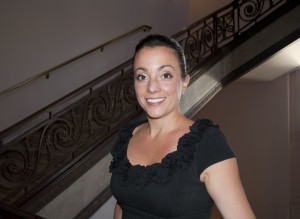At this time of year, those of us in the U.S. often find our eyes turned skyward to admire a brilliant array of colors lighting up the night sky in celebration of America’s independence. Up until about a hundred years ago, a colorful display of another kind filled the North American skies, and not just on the fourth of July. Jewel-colored Carolina parakeets (Conuropsis carolinensis) traveled in huge, noisy flocks from southern New York and Wisconsin to the Gulf of Mexico, favoring old forests along rivers. Although they looked tropical, Carolina parakeets didn’t migrate south in the winter but weathered the cold.
Author: Liz O'Brien
The story of the last Passenger Pigeon and the disappearance of the Great Auk, Carolina Parakeet, and Heath Hen reveal the fragile connections between species and their environment. To help tell their story, the Smithsonian Libraries, Biodiversity Heritage Library, and the National Museum of Natural History have curated a joint exhibit entitled Once There Were Billions: Vanished Birds of North America which opened June 24 in the National Museum of Natural History. Over the next several weeks, we’ll be highlighting each of the four birds with content from the exhibition and illustrations from BHL.
 This “Mentorship Monday” post was written by Tina Muracco, Director of Advancement, Smithsonian Libraries Office of Advancement & Public Affairs. The Smithsonian Institution Mentorship Program is an annual 9-month program dedicated to “developing leaders throughout the Institution” through professional development in the areas of networking, interpersonal skills, coaching, and institutional engagement.
This “Mentorship Monday” post was written by Tina Muracco, Director of Advancement, Smithsonian Libraries Office of Advancement & Public Affairs. The Smithsonian Institution Mentorship Program is an annual 9-month program dedicated to “developing leaders throughout the Institution” through professional development in the areas of networking, interpersonal skills, coaching, and institutional engagement.
Throughout my career, I have gained valuable experience and insight, both professionally and personally. I attribute most of my progression to the brilliant individuals I have worked with and have had the pleasure of calling mentors. A mentor can help build confidence, impart thoughtful advice, and inspire new career goals and perspectives. A great mentor will not only provide specific guidance on certain tasks and duties, but also provide general advice on honing life skills and forming a solid work ethic.
Once an amazing diversity of birds-some in breathtaking abundance-inhabited the vast forests and plains of North America. But starting around 1600, some species began to disappear, as humans altered habitats, over-hunted, and introduced predators. A notable extinction occurred 100 years ago, with the death of Martha the Passenger Pigeon, the last member of a species that once filled America’s skies. The story of the last passenger pigeon, and the disappearance of the great auk, Carolina parakeet, and heath hen reveal the fragile connections between species and their environment. The Smithsonian Libraries unveils Once There Were Billions: Vanished Birds of North America at the National Museum of Natural History June 24. This exhibition is a joint production of Smithsonian Libraries, Biodiversity Heritage Library, and the National Museum of Natural History.
 This “Mentorship Monday” post was written by Joel Richard, Lead Web Developer, Web Services and Digital Library. The Smithsonian Institution Mentorship Program is an annual 9-month program dedicated to “developing leaders throughout the Institution” through professional development in the areas of networking, interpersonal skills, coaching, and institutional engagement.
This “Mentorship Monday” post was written by Joel Richard, Lead Web Developer, Web Services and Digital Library. The Smithsonian Institution Mentorship Program is an annual 9-month program dedicated to “developing leaders throughout the Institution” through professional development in the areas of networking, interpersonal skills, coaching, and institutional engagement.
This past year, I participated in the Smithsonian’s Mentorship Program. I found it to be a rewarding experience and one that I would do again. I participated as a mentor and before I was even matched up with a mentee, I felt I’d already accomplished a lot.
Welcome to “Mentorship Monday”, where we will be featuring blog posts from our staff about their experiences with the Smithsonian Institution Mentorship program.This “Mentorship Monday” post was written by Bonnie Campbell Lilienfeld, Curator and Deputy Chair, Division of Home Life, National Museum of American History. Bonnie mentored Smithsonian Libraries’ technician, Rita O’Hara, who sadly passed away in December of 2013. The Smithsonian Institution Mentorship Program is an annual 9-month program dedicated to “developing leaders throughout the Institution” through professional development in the areas of networking, interpersonal skills, coaching, and institutional engagement.
I had the privilege of getting to know Rita O’Hara through the Smithsonian’s 2013 Mentoring Program. She was the first potential mentee I talked to, and we instantly hit it off. As part of the program, Rita and I met at least every couple of weeks, usually for lunch, to go over her goals for the program, and talk about work and life. I always looked forward to seeing her. She was one of the gentlest and most optimistic people I’ve ever met, and passionate about so many things.
Here’s your chance to adopt Numbers (Stuttgart, 1968). The catalog is a collaboration between the poet Robert Creeley (1926-2005) and the influential American pop artist Robert Indiana (1928-), who is best known for his Love graphic and sculpture in Philadelphia.
